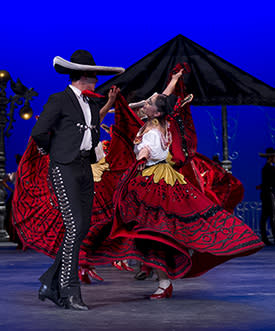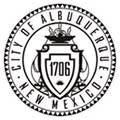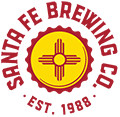
Search
Luke Bulla
August 7th7Horse
August 9thLuke Bulla
August 9thRaul Midón
August 13thRaul Midón
August 14thLara Ruggles
August 20thLara Ruggles
August 21stThe WesternHers
August 23rdLevi Platero | Chris Dracup :Funk of the West
August 23rdThievery Corporation
September 3rdTab Benoit
September 9thDevon Allman's Blues Summit
September 9thTab Benoit
September 10thBands of Enchantment: Griffin William Sherry, Sgt. Splendor and JD Nash & the Rash of Cash
September 17thCoco Montoya
September 19thBands of Enchantment FREE Outdoor Music Festival
September 20thCoco Montoya
September 20thAlasdair Fraser & Natalie Haas
September 24thAlasdair Fraser & Natalie Haas
September 25thJ2B2
September 26thJohn Moreland
September 26thLasotras
September 27thMasters of Hawaiian Music
October 3rdMasters of Hawaiian Music
October 4thSlim Cessna + Maria de Cessna
October 4thShonen Knife
October 11th"Stop Making Sense" Screening
October 12th"Stop Making Sense" Screening
October 13thHayden Pedigo
October 22ndGerry O'Connor with Don Penzien
October 31stGerry O'Connor with Don Penzien
November 1stKurbasy
November 8thKurbasy
November 9thThe Bébé La La 15-Year Anniversary Concert & Celebration
November 15thLuca Stricagnoli
November 21stRyanhood
November 29thRyanhood
November 30thJane Siberry
December 2ndJane Siberry
December 3rdTrey Gunn and David Forlano
December 6thSadness, Madness, & Mayhem III
January 24thLúnasa
March 16thBallet Folklórico de México de Amalia Hernández
at
National Hispanic Cultural Center - Journal Theatre
1701 4th St SW
Albuquerque NM 87102
Other Events at National Hispanic Cultural Center - Journal Theatre
Add to Cal
Tickets cost $25, $39 and $49 (plus applicable service charges). Tickets are available from the NHCC Box Office (online, in person and by phone - (505) 724-4771).
 In 2018, Ballet Folklórico de México will return to the United States for an extended multi-city tour featuring renewed performances of the company's classic choreography. Founded in 1952 by dancer and choreographer Amalia Hernández, Ballet Folklórico brings together the music, dance and costume of Mexican folklore from pre-Colombian civilizations through the modern era. With its permanent home at the Palacio de Bellas Artes, one of Mexico City's most historic venues, the company has developed choreography for 40 ballets, composed of 76 folk dancers who have performed extensively across Mexico and abroad.
In 2018, Ballet Folklórico de México will return to the United States for an extended multi-city tour featuring renewed performances of the company's classic choreography. Founded in 1952 by dancer and choreographer Amalia Hernández, Ballet Folklórico brings together the music, dance and costume of Mexican folklore from pre-Colombian civilizations through the modern era. With its permanent home at the Palacio de Bellas Artes, one of Mexico City's most historic venues, the company has developed choreography for 40 ballets, composed of 76 folk dancers who have performed extensively across Mexico and abroad.
Folkloric dance, like its equivalent English term folk dance, means "dances of the people." The dances reflect the traditions, customs, legends, beliefs and lifestyles of people in particular countries and regions. Folkloric dance expresses the life and spirit of a people through its movement and music. It is both historical and current, preserving tradition yet moving with the present times.
Ballet Folklórico de México founder Amalia Hernández wanted the dance company to reflect not only her love of her native Mexico but also provide a history of Mesoamerican culture. She set out to capture the beauty of the universe in motion as reflected in the pre-Colombian civilizations and through the Hispanic influences of the Viceroyal era up to the Revolutionary years of the early 20th century. Throughout her life, Hernandez continuously revised and renewed her work, a tradition continued today by her family. The result is a re-creation of Mexican traditions on stage, preserving the diversity and characters found throughout the regions of Mexico.
Born in 1917, Hernandez developed a passion for performing and dance early in life. She became a choreographer at the Fine Arts National Institute, where she taught modern dance. She then turned her focus to traditional Mexican folk dances. She combined these dances with more choreographed movements from her formal training, helping to create an entirely new style of dance known as baile folklorico.
In 1952, Hernandez founded the Ballet Folklorico de Mexico. Beginning with just eight dancers, the troupe grew to over three hundred in the years to follow. The company performed on television for the first time in 1954, after which they were featured in a weekly broadcast. This success allowed Amalia's group to tour North America and even represent Mexico in the Pan American Games in 1959.
Since its inception, the group has danced for more than 22 million people. Hernandez remained involved with the company until her death in 2000, working alongside her daughters and grandson.
 Ballet Folklórico de Mexico's performance is made possible in part by a grant from the Western States Arts Federation (WESTAF) and the National Endowment for the Arts.
Ballet Folklórico de Mexico's performance is made possible in part by a grant from the Western States Arts Federation (WESTAF) and the National Endowment for the Arts.

 prevent_tinymce_removal
prevent_tinymce_removal













